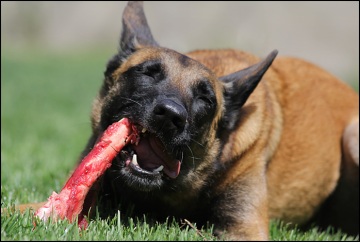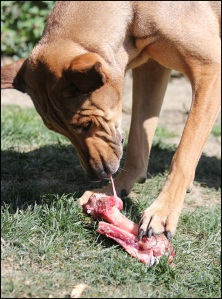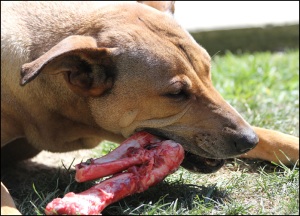 There are many aspects that go into finding the right food for your pet. When you hold a bag of food in your hands, skip over the cute dog and savory meat pictures. What really counts are the hard fact ingredients. And boy, can they be misleading! Per the Food and Drug Administration, the ingredient list on a food label is the listing of each ingredient in descending order of predominance. This means the first couple of ingredients make almost the whole food. If the first ingredient on the list is corn, then your food is pretty much made out of, well, corn. But from here, it gets tricky – the order the ingredients are listed on dry food is made before the food is processed and the water extracted. So if chicken is one of the first ingredients, it may actually turn out to be one of the last, after the food is processed, because it is obviously a lot lighter when dried. Yet it will still be on top of the ingredient list. Here are some other potentially misleading labelling practices:
There are many aspects that go into finding the right food for your pet. When you hold a bag of food in your hands, skip over the cute dog and savory meat pictures. What really counts are the hard fact ingredients. And boy, can they be misleading! Per the Food and Drug Administration, the ingredient list on a food label is the listing of each ingredient in descending order of predominance. This means the first couple of ingredients make almost the whole food. If the first ingredient on the list is corn, then your food is pretty much made out of, well, corn. But from here, it gets tricky – the order the ingredients are listed on dry food is made before the food is processed and the water extracted. So if chicken is one of the first ingredients, it may actually turn out to be one of the last, after the food is processed, because it is obviously a lot lighter when dried. Yet it will still be on top of the ingredient list. Here are some other potentially misleading labelling practices:
- Chicken Byproduct Meal, for example, reads like there is still chicken meat included. It consists however of dry, ground, rendered parts of the carcass such as necks, feet, undeveloped eggs and intestines. There is typically no muscle meat included.
- Animal fat is obtained from the tissues of mammals and/or poultry in the commercial processes of rendering or extracting (AAFCO). Since it is not required to originate from slaughtered animals, the source can include roadkill or euthanized animals. This is the same for anything that is named ‘Animal’ like Animal Digest or Animal by-product.
- Brewer’s Rice are the small milled fragments of rice kernels that have been separated from the larger kernels of milled rice (AAFCO). This processed product misses many of the nutrients containted in whole ground rice and brown rice.
- Propylene Glycol is an approved additive for dog food. It is toxic to cats and may be lethal for dogs in higher dose. It is also used in anti-freeze.
- Wheat Gluten is the substance remaining when wheat is washed to remove the starch (AAFCO). It is used as a binder in dry food and has almost no nutritional value. Corn Gluten Meal similarly has almost no nutritional value.
- Beef and Bone meal are rendered product from beef tissues, including bone. These are parts not suitable for human consumption.

- Meat and Bone meal has the same source issue as the ‘Animal’. It can be from any mammal, including roadkill or euthanized animals. It can also contain animals like rats or sick animals, some may have been treated with medication.
- Poultry does not mean chicken! It can be sourced from any fowl. Poultry Meal does not even have to origin from slaughtered fowl, which again, makes it possible to include roadkill and euthanized birds.
- Any type of sweeteners, like corn syrup, cane molasses or plain sugar, have no place in dog food. Just like salt (or Sodium Chloride) or yeast culture, it is being added to make the food more appealing to dogs.
So check the ingredient list when you are shopping for your dog’s food – compare different foods and check the Internet for more information. A healthy diet makes for a healthy pet!















